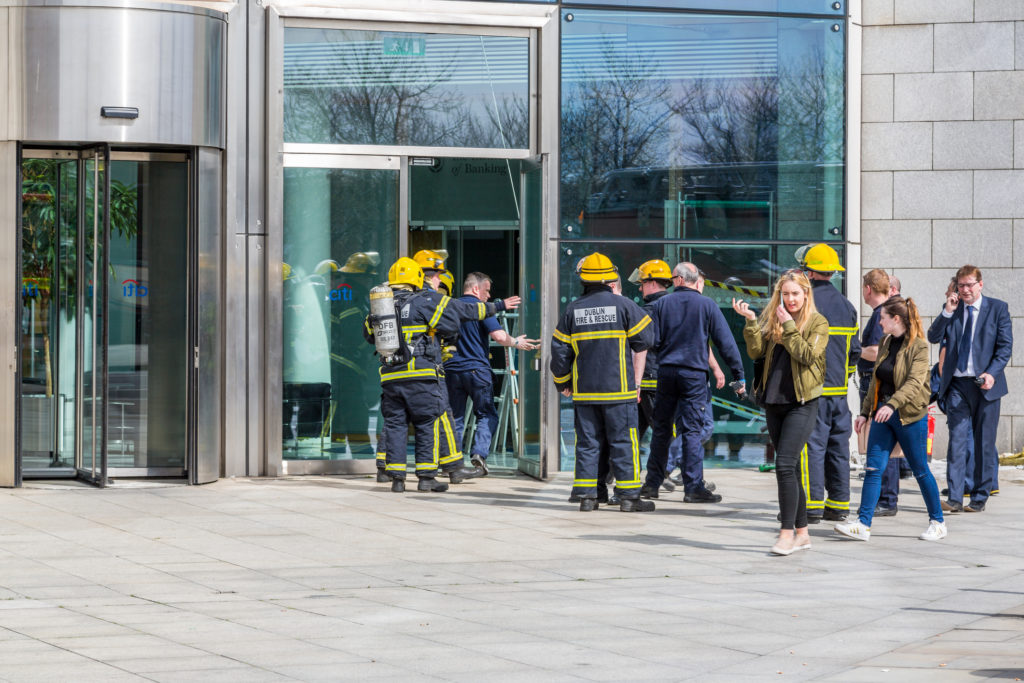February 13, 2020
Imagine a top Real Estate broker walking a high-profile client through a newly renovated building and touring a highly coveted penthouse office space on the 52nd floor. The client’s phone rings and they excuse themselves to take the call. “Sorry, who is this? Can you repeat that, please? Can you hear me? Let me move closer to the window. Can you hear me now?” The call drops, and they are ready to continue the tour, but now they ask if Carrier X has a DAS solution in this building. Unfortunately not. They have 500 + employees all on a corporate plan with Carrier X, and there is no way they can conduct business in a space without that wireless network. Now your leasing deal is dead.
Avoid situations like this by taking the following five considerations into account for your property in 2020 and beyond:
1. Broadband connectivity (both wired and wireless) is paramount to building owners
It’s been said that broadband connectivity is second only to location according to leasing decision-makers and ranks above price (WiredScore). While having a building that is well connected to the outside world is important, it is still very important to have a robust indoor network that supports both wired and wireless technologies (more on this later). Today we know that 80 percent of wireless traffic originates indoors, and some 70 percent of smartphone traffic uses some sort of Wi-Fi connection. Broadband connectivity has become the fourth utility; virtually zero business can operate without it.

2. Fiber is the future
Whether you are renovating a 100-year-old property or devolving the newest commercial high rise, build a robust fiber optic backbone that will ensure many decades of reliable high-speed capacity throughout the building. Fiber optic cabling has near limitless data capacity and 25+ year life. Fiber can be installed throughout a building or to key IDF riser rooms. Either way, you need a process to manage the inventory of the fiber strands to maximize use of the capacity. Wireless needs wires (fiber and CAT cabling) in order to take full advantage of the latest speeds and applications. Each wireless technology will have its own wiring requirements, but they all share fiber optic cabling as the common denominator. So, if you install a quality fiber backbone, you will be enabling an easier transition into the next generation of wireless, albeit LTE 5G, or Wi-Fi 6.
3. LTE is not going away in 2020
Does your property need better LTE cellular coverage? Radio frequency technology used for LTE cellular networks makes use of a wide array of frequencies. As the wireless carriers and network operators look for ways to increase data speeds to meet increased demands, they look to higher frequencies to provide faster data rates. This, in turn, means that those signals have less ability to penetrate various materials. Most commonly talked about is energy-efficient LEED-certified glass – which also happens to block out RF signals, inhibiting signal from large cell towers from getting into your building. If demand is high enough, you may want to consider an in-building wireless network. Consider partnering with a third-party operator with the expertise and relationships to bring an LTE-capable network that supports all wireless carriers, rather than a single-threaded system that only supports a single carrier.
What if you’re already heavily invested in a 4G LTE in-building wireless network?
You might be due for an annual performance review to make sure everything is operating as expected. Does your network have all wireless carriers operating on it? Do you still have 4G coverage problems in your building such as dropped calls and dead zones? If you’re asking yourself about 5G technology, most buildings with a 4G capable network will need some sort of upgrade to support 5G. If you’re working with a third-party operator, they will work with the carriers on the necessary upgrades to support any 5G implementations.
4. Overlooking public safety network compliance could be costly
Public safety networks are coverage-based networks that enable first responders to have communication in critical situations. More and more, local jurisdictions are adopting codes as outlined by organizations like NFPA, IFC, FirstNet, IBC and the ICC that require property owners to install a code-compliant public safety system. Even if they are not currently mandated by your local jurisdiction, as codes continue to be adopted or change, you may be required to install or update a public safety network within your building soon. Check with your local government to ensure that your system is code compliant.

5. The right wireless technology partner is key
Navigating the wireless industry amid a plethora of solutions and technology options all touted to be THE next big thing can be confusing. At Connectivity Wireless, we’re not interested in pushing the next tech – we’re motivated by finding a lasting, well-suited solution to meet your connectivity goals today and tomorrow. As a partner, we’ll come alongside to help you make the best technology decisions for your property or enterprise. How? By helping you identify your immediate connectivity needs as well as develop a long-term strategy.
Contact us today to learn how in-building wireless solutions can enable your connectivity goals and set you up to succeed with 5G, IoT and beyond.
Want to Learn More?
Benefits of Working with a Wireless Consulting Services Company
Wireless IoT Technologies to Look Out For in 2020
8 Key Considerations for Next-Generation Wireless Networks
